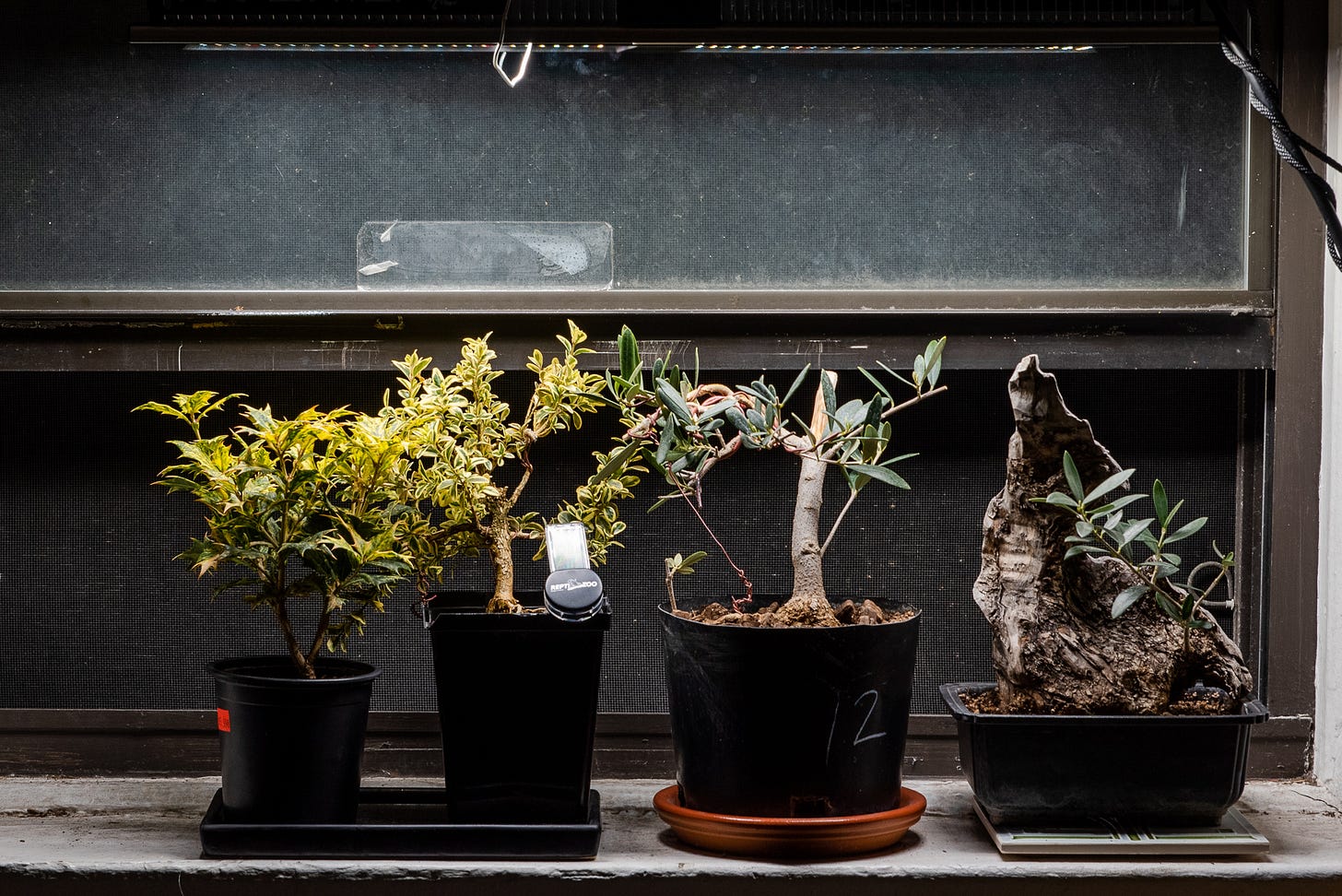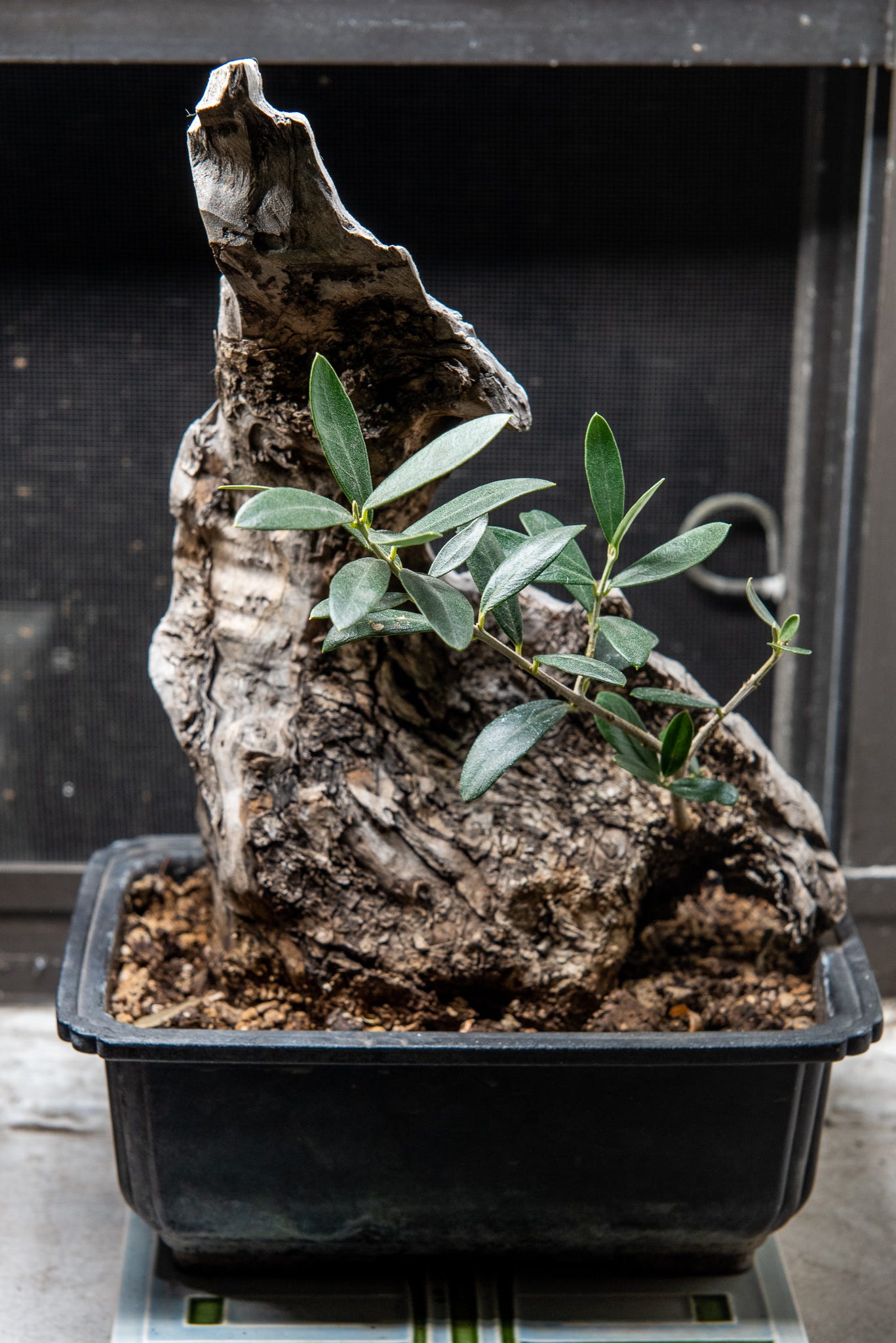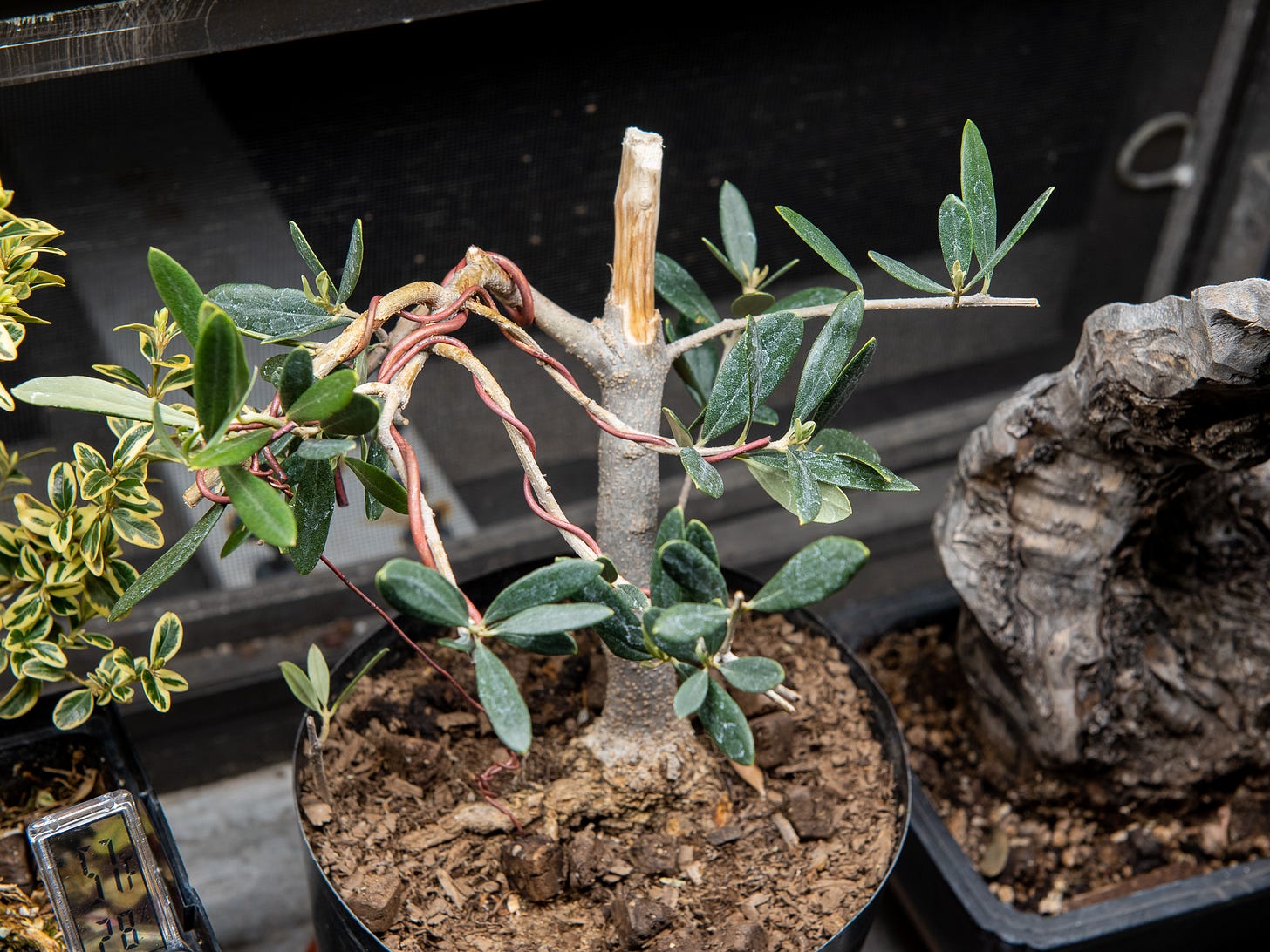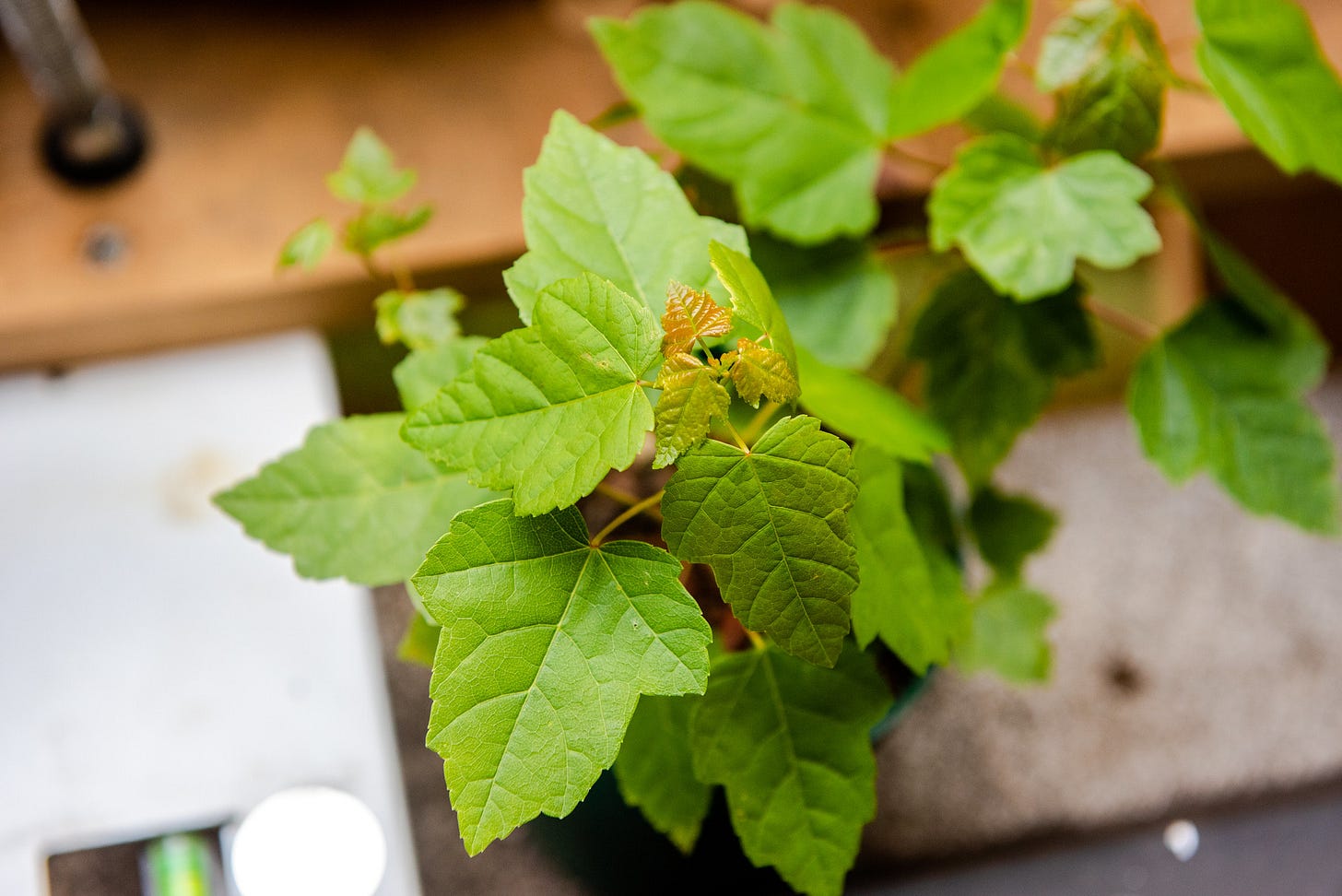If you’re just joining us, here’s part 1 of my indoor bonsai tour. Now where was I?
Tropical trees can grow year-round if the climate remains favorable. Trees adapted to cooler climates usually go into some kind of dormancy during the cold months as a survival strategy. The shorter days and freezing nights of winter put more energy demands on a tree than its photosynthesis can meet, so it shuts down.
Trees that go dormant factor hibernation into their energy reserves, to the point that if you deny a tree its dormancy, it’ll exhaust itself, weaken, and die, as if you let a grown person sleep only for two hours a night. (If you’re watching global temperatures rise and wondering what it means for all the trees in temperate regions…yeah.)
It’s this dormancy requirement that makes bonsai an outdoors-only hobby for the most part. But with some trees, such as tropicals and subtropicals, you can cheat.
The subtropics are the narrow regions between temperate and tropical zones. In the Northern Hemisphere they include northern Mexico and the lower third of the United States; North Africa and much of the Middle East; and North India and Southern China. Subtropical zones have winter days that get below freezing, but not many of them. While subtropical trees still appreciate a rest period in winter to slow down, true dormancy is more of a suggestion than a requirement. Each species has its own “chilling hours”: a quota of hours spent in temperatures between 32°F and 45°F, necessary for long term health. I currently have six subtropical trees: two olives, two pomegranates, an osmanthus, and a boxwood. (The pomegranates arrived late in the season, from balmy Texas, so they went straight to the tropical zone. I’ll migrate them to my windowsill setup come fall.) Most of these subtropicals could live outdoors for 11 months out of the year—being brought in on the coldest days—but could also plausibly live indoors, and like I wrote last week, I like having trees close.
I found myself in the opposite predicament of most subtropical bonsai people. They usually wish they could keep their trees outdoors all year with the pines and maples, and have to figure out complicated overwintering setups indoors. I wish I could keep them indoors full time, but have to give them enough seasonal climate variation to satisfy their needs. So I’ve been experimenting with a subtropical zone in my apartment for the last six months, and while that’s far from enough time to say anything conclusive, I’m cautiously optimistic.
My bedroom is the coldest spot in my apartment. It’s a corner room, the only one with windows on two sides. Each window has its own radiator underneath, but only one of them works in the winter. This suits me perfectly; I’ve been a hot sleeper all my life and usually keep the windows open until it’s time to install an air conditioner. I have both of my parents’ genetics to thank for this trait, though as I also inherited my father’s chest hair pattern and snoring habit, it’s hard not to think of myself as a hibernating bear come winter.
With windows open, my windowsill above the inactive radiator maintains a consistent microclimate that’s 10 degrees warmer than outdoor temperatures, with a relative humidity 10 percentage points lower than outside. Depending on the severity of the weather, buffering or airing out these trees is as simple as closing or opening a window. They receive great airflow; not the same as the great outdoors, but comparable to a protected corner of a balcony.
(Those of you with houses and lawns can accomplish the same with an unheated porch or garage, as many bonsai enthusiasts do with much less fuss.)
My greatest success with the subtropical zone was convincing a red maple seedling to go into dormancy, with a decent fall display beforehand. Other than some wind scorching on a few osmanthus leaves from a particularly windy winter day, my subtropicals came through winter well, and in their tiny microclimate, spring has already begun.
There’s also the vital matter of artificial light. This west-facing windowsill receives three to four good hours of afternoon sun in the summer and a quick 30 minutes in the depths of winter. Not ideal in the best of circumstances, especially for trees like olives that want as much direct, unfiltered sunlight as you can throw at them. So I’ve “invested” in a 150 watt Mars Hydro LED light that’s currently on a timer for 13 hours a day. I’ll adjust the “day” lengths along with the seasons to attempt to mimic subtropical conditions. Mounting this light was much easier than in my kitchen; thank you pre-war architecture and your fondness for portrait rails.
Will any of this work in the long term? No idea! Aphids are currently attacking the pomegranates in my kitchen. I want to find ways to get my sun worshipping trees outdoors for part of this summer, which I’m told can give indoor trees a burst of energy they can carry through the year. If everything fails, I’ll have had months or years of enjoyable time with these trees. I’ve already learned heaps.
We’ll see how it goes day by day. Each one of them will be a gift. A chance to observe and react and try again.
Tree reading
Revisiting the bonsai scene from The Karate Kid led me to this excellent essay by Beth Nguyen: “What Mr. Miyagi taught me about anti-Asian racism in America.” I can’t believe Miyagi gives away two potted bonsai! [Catapult]
Currently enamored with this Hugo Simberg painting, The Garden of Death. [Finnish National Gallery]







